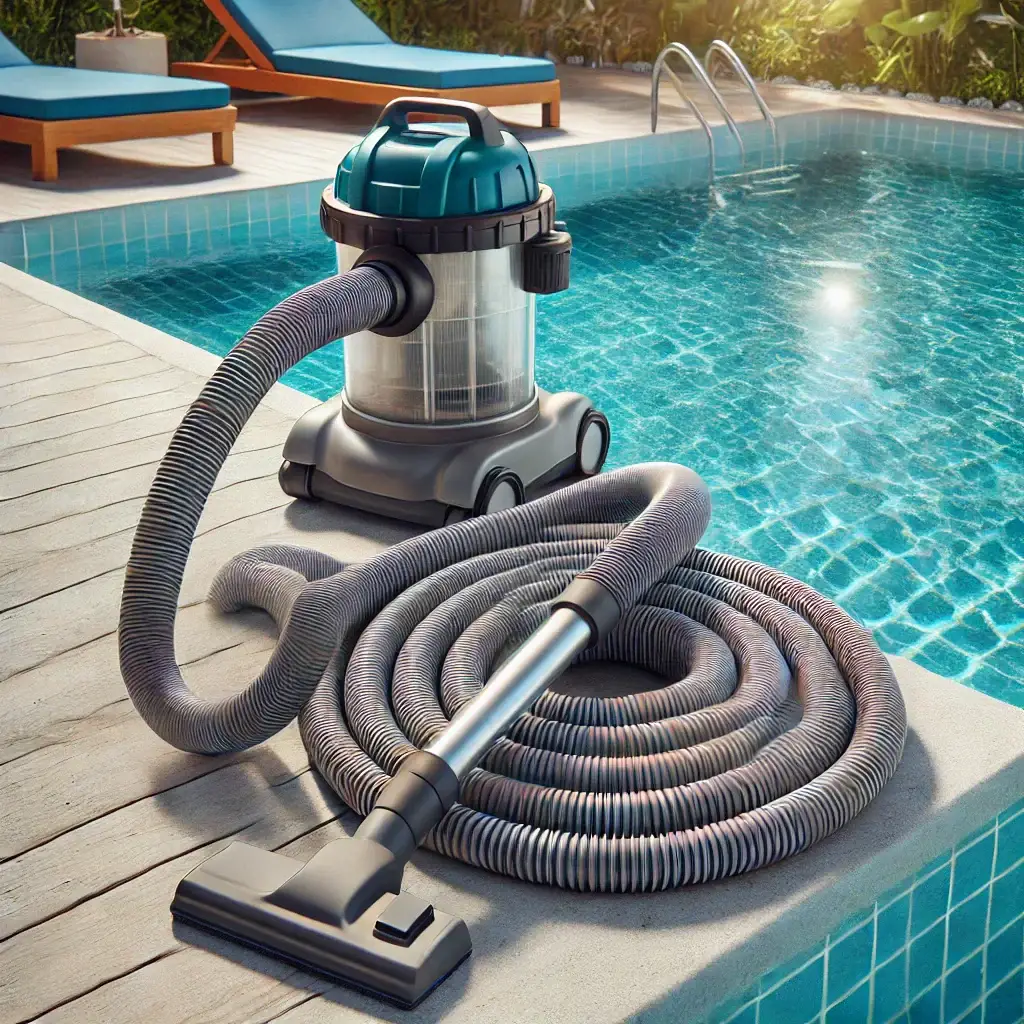
When Florida pool owners perform a routine “shock,” the expectation is crystal-clear water by morning. Yet, sometimes, the opposite happens — the pool turns cloudy or even milky white. If you live in Port Charlotte, Punta Gorda, North Port, Rotonda, or anywhere in Charlotte County, this can be a common sight, especially after storms or high-use weekends.
Let’s break down why shocking can make pool water cloudy, what’s really happening chemically, and how to fix it fast.
What Is Pool Shock?
“Shocking” a pool means adding a high dose of chlorine (or a chlorine alternative) to rapidly oxidize contaminants such as:
- Sweat, sunscreen, and body oils.
- Ammonia and organic debris.
- Algae spores and bacteria.
This process burns off waste and restores sanitizer levels. However, when conditions aren’t right, shock can react unpredictably — leading to cloudy water.
The Science Behind Cloudy Water After Shocking
When shock is added, it increases chlorine concentration dramatically. In this reaction process, the following can occur:
- Oxidation of organic materials – The shock attacks organic waste, creating microscopic particles that stay suspended until filtered out.
- Calcium precipitation – High pH or high calcium hardness can cause calcium carbonate to form, creating a cloudy or milky look.
- Chloramine breakdown – Destroying chloramines releases nitrogen gas and tiny insoluble particles, temporarily clouding the water.
- Filtration overload – If your filter isn’t clean, it can’t capture the fine particles generated by shocking.
Pro Tip: A cloudy pool after shocking doesn’t mean the treatment failed — it often means the shock worked and your filter just needs time to do its job.
Common Mistakes That Cause Cloudiness
1. Shocking in the Daytime
Chlorine shock dissipates quickly in Florida’s intense sunlight. Always shock at dusk or night to prevent UV degradation.
2. High pH Levels
If pH is above 7.8, chlorine becomes far less effective and may react by forming calcium deposits or chloramine clouds.
- Test and adjust pH to 7.2–7.6 before shocking.
3. Poor Circulation
Dead spots or weak circulation leave shock unevenly distributed, causing localized reactions.
- Run the pump for at least 8–12 hours after shocking.
- Brush walls and steps to help mix chemicals evenly.
4. Dirty or Clogged Filter
After shocking, your filter must trap millions of fine particles. A clogged or unwashed filter can’t keep up.
- Cartridge filters: Rinse thoroughly every 4–6 weeks.
- DE or sand filters: Backwash after heavy cleaning sessions.
Learn more: Pool Filter Cleaning Without Breaking It
Weather and Local Conditions Matter
In Charlotte County, frequent rain and heat create unique chemical challenges:
- Rainwater lowers chlorine and dilutes chemicals, reducing shock effectiveness.
- High heat increases chlorine demand, meaning your pool burns through sanitizer faster.
- Storm debris adds organic material that reacts with chlorine, forming cloudiness.
If you live along the coast in Punta Gorda or Rotonda, saltwater systems can also experience temporary haze after shocking — caused by oxidation of salt minerals. Don’t worry; it usually clears in 12–24 hours.
How to Fix Cloudy Water After Shocking
Step 1: Run the Pump Continuously
Let your system circulate for at least 24 hours. The filter needs time to remove suspended particles.
Step 2: Check and Clean the Filter
If pressure rises 8–10 psi above baseline, backwash or clean the filter element.
(Read our guide on Pool Filter Pressure Problems Explained for detailed steps.)
Step 3: Use a Clarifier (Optional)
Clarifiers bind fine particles into larger clusters that your filter can catch more easily. Use sparingly — overdosing can worsen cloudiness.
Step 4: Test and Balance Again
After 24 hours, retest:
- pH: 7.4–7.6
- Chlorine: 1–3 ppm
- Alkalinity: 80–120 ppm
- Calcium hardness: 200–400 ppm
Balancing ensures cloudiness won’t return.
Preventing Cloudy Water Next Time
Follow these quick best practices:
- Test before you shock. Balance pH and alkalinity first.
- Shock weekly in summer (especially after storms or pool parties).
- Clean the filter regularly.
- Use stabilized chlorine or cover the pool to prevent UV burn-off.
- Avoid over-shocking. More is not always better — excessive chlorine reacts with itself and clouds water.
For residents in Port Charlotte or North Port, maintaining a preventive schedule is easier with professional testing and weekly service. Visit Florida Detail to schedule maintenance or request a quote.
External Resources for Local Pool Care
- PortCharlottePoolServices.com – Local pool maintenance experts.
- NorthPortPoolCompany.com – Cleaning and repair specialists.
- UnlimitedManiac.com – SEO & local business marketing partner for pool companies.
Final Thoughts
Cloudy water after shocking your pool might look concerning, but it’s usually a short-term reaction, not a disaster. By maintaining balanced chemistry, proper filtration, and consistent maintenance, your pool will clear up within a day or two — and stay beautiful through every Florida summer.
If you’re unsure about chemical levels or want professional guidance, contact Florida Detail — serving Charlotte County, Punta Gorda, and Port Charlotte with expert pool testing, maintenance, and care.
